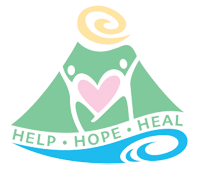Project: Head, Neck, Spine

University of Hawaii at Manoa, College of Education, Department of Kinesiology and Rehabilitation Science
Project Funded by §321H-4 Neurotrauma Special Fund from May 16, 2017 to Present

Project Goals
To develop, pilot, and launch an online education resource to educate Hawaii’s school-aged children in grades 3 to 9 on head, neck, and spine related health and safety protocols. The content includes, but is not limited to:
- Head injuries sustained by children/students;
- Signs and symptoms of head injuries and concussions;
- Recognition of possible neck and spinal cord injuries;
- Information on how to assist if someone sustains a head, neck, or spine injury;
- Information on how to assist if someone sustains a head, neck, or spine injury, including follow-up protocol to inform parents, friends, and caregivers of possible injury and communicate the importance of follow-up and follow through of support;
- Simple “what to do next” steps; and
- Prevention measures.
Pre- and post- test evaluations are conducted to obtain students’ baseline understanding of head, neck, and spine injuries and assessing their ability to demonstrate content knowledge and appropriate skills.
The project continues to expand, implement, and monitor the online educational resource, allowing for continuity and improvement and learning opportunities for Hawaii’s homeschooled students. The project is currently developing an online resource on “Return to Learn” protocols for educators.
The project’s plans for sustainability include instituting Project: Head, Neck, Spine with the Hawaii Concussion and Awareness Management Program (HCAMP) as an online educational resource. The project will also continue to do outreach to Hawaii schools and homeschooled students in accessing the resource at no cost.
Demographic and Evaluative Data
As of February 2022, a total of 1,877 Hawaiʻi students statewide have been provided access to the Head Neck Spine curriculum. Of the 1,877 students given access, 1,222 (65%) have successfully completed the entire curriculum.
For more information on the online educational resource, please visit Project: Head, Neck, Spine.
